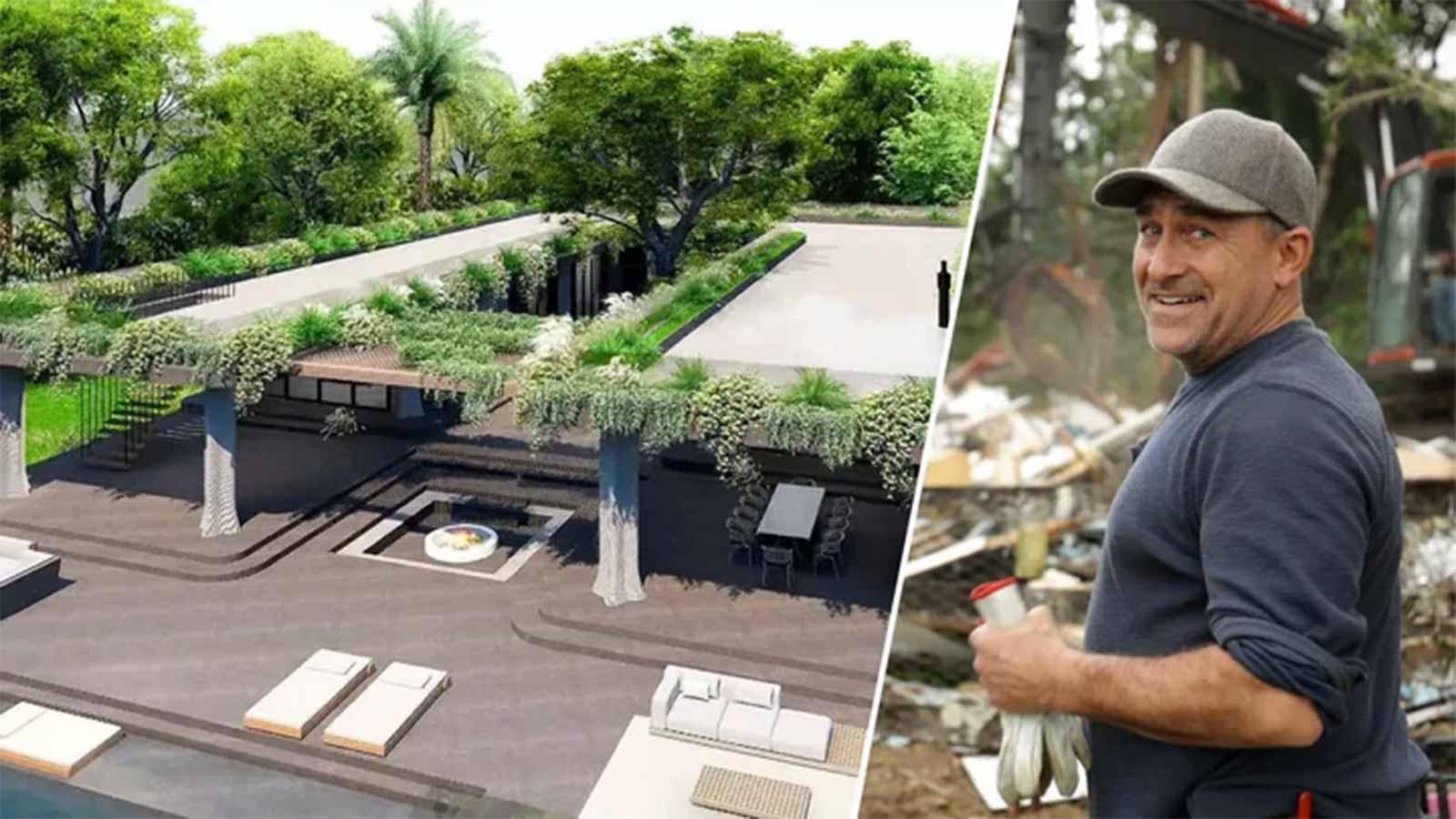Quick Read
Jamie Durie is building Australia’s second 3D-printed concrete home on his Bangalow farm.His new show ‘Future House’ follows three families constructing sustainable, affordable homes using innovative methods.Australia faces a severe housing crisis, needing 1.2 million new homes in five years, but is short 85,000 tradespeople.The series explores modular, 3D-printed, and pre-cast prefab homes, with each build judged by the Green Building Council of Australia.Durie’s project aims to provide real solutions by showcasing practical, sustainable building innovations.
Australia’s housing crisis is no longer just a headline—it’s a reality felt by families from Sydney’s suburbs to Byron Bay’s rolling hills. Enter Jamie Durie, whose name has become synonymous with sustainable design and bold experimentation. After battling bureaucracy and delays in building his off-grid luxury home in Sydney’s Northern Beaches, Durie is setting out on a new, audacious mission: to change how Australians build and live.
Premiering on Channel 9 and 9Now, ‘Jamie Durie’s Future House’ is far more than another home renovation show. It’s a documentary, a challenge, and a call to action rolled into one. The series tracks Durie, his wife Ameka Jane, and two other families—the Foxes and the Quercinis—as they embark on a journey to construct three homes using radically different methods: modular, 3D-printed concrete, and a new pre-cast, pre-fab technique. Each approach claims to be the answer to Australia’s pressing need for affordable, resilient, and sustainable housing.
But what makes this project stand out in the sea of property shows is its focus on innovation. Durie is building Australia’s second-ever 3D-printed concrete home, following the country’s first such build—a four-bedroom home in Woolooware, designed by Julian Brenchley of ‘The Block’ fame. The new house rises on Durie’s own farm near Bangalow, just outside Byron Bay, with the help of a 3D printing concrete extruder that replaces traditional formwork. This technology doesn’t just save time; it slashes material waste and labor requirements, potentially redefining what’s possible for housing in Australia.
“Australia’s in the midst of the biggest housing crisis we’ve ever had,” Durie explains on the show. Government figures back him up: 1.2 million homes need to be built in the next five years. The obstacles are daunting—red tape, land shortages, and outdated building methods that drag out timelines and inflate costs. Durie points out, “It’s expensive, it’s stressful, and even if we wanted to, we’re about 85,000 trades short of achieving our target.” His solution? Rethink everything. From design to delivery, Durie’s approach throws out the rulebook, aiming for houses that are “sustainable, affordable, resilient and stylish.”
The show’s cast isn’t just building for television—they’re building for real families, in real time. With top builders and innovators onboard, each house will be judged by the Green Building Council of Australia, ensuring not just good television, but standards that matter. The series promises a deep dive into each construction method, exploring the practical hurdles and the possibilities they unlock.
For viewers, the show offers more than inspiration. It’s packed with actionable information, ideas, and innovations that can be adapted for their own homes. From off-grid energy solutions to cutting-edge materials, Durie’s Future House becomes a blueprint for anyone dreaming of a better way to live.
What’s the bigger picture? Australia faces a shortage of skilled trades and suitable land, while traditional methods can take months or years for a single build. By spotlighting modular and 3D-printed homes, Durie’s project hints at a future where homes are not just constructed faster, but smarter. Modular builds promise efficiency and flexibility, while 3D printing could lower costs and environmental impact. Pre-cast, pre-fab methods may further streamline production. Each approach is tested, not just in theory, but through the lived experiences of three families.
Durie’s own journey—from the setbacks of his previous Northern Beaches build to the hands-on challenges of Future House—mirrors the struggle of many Australians. His willingness to experiment, collaborate with innovators, and share both successes and failures brings authenticity to the project. He’s not just a presenter, but a participant, living the reality he’s advocating for.
As the series unfolds, viewers are invited to weigh the merits of each method. Which solution will prove most viable for the average Australian family? Can innovative building techniques really overcome the entrenched challenges of red tape and resource shortages? By the season’s end, the Green Building Council of Australia will deliver its verdict, but the conversation sparked by Future House may prove even more valuable.
Ultimately, Jamie Durie’s Future House isn’t just about building homes—it’s about building hope. For families facing uncertainty, for builders searching for smarter solutions, and for a country grappling with a crisis that demands creativity and courage. Durie’s project may not solve every problem overnight, but it plants seeds of possibility, showing that with the right ideas and the right team, the future of housing can be brighter, greener, and more accessible.
Jamie Durie’s Future House positions itself as a real-time experiment in sustainable innovation, proving that with determination and new technology, Australia’s housing crisis can be tackled from the ground up. By sharing the process, challenges, and breakthroughs on national television, Durie’s team not only educates but inspires—demonstrating that future-ready homes are within reach if we’re willing to rethink tradition and embrace change.

